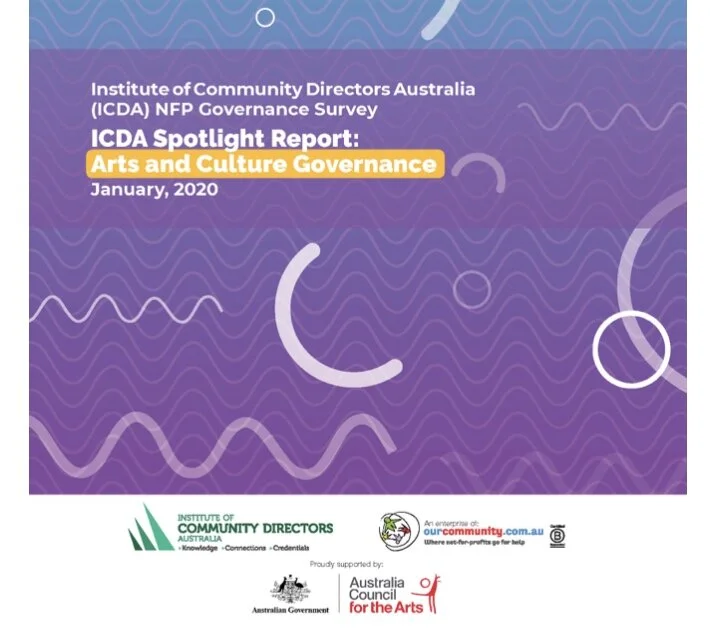ARTS and CULTURE GOVERNANCE
This article is part of our Insights For Action series. Join the mailing list to receive this and more.
Ensuring the sustainability of arts organisations is vital to a creatively connected nation. Our cultural and creative sectors are facing significant forces of change and evolution. A recent report by the Arts Council sets out the current state of governance in the arts and highlights new insights about governance practices.
It is no longer possible to rely on traditional business models, modes of operation or engagement. To ensure the creative sector thrives in this evolving landscape, it is important for the sector to continually adapt to industry change; to realise the potential of diversity; and to actively cultivate creativity and innovation.
The Australia Council partnered with the Institute of Community Directors (ICDA) and Our Community to publish the Arts and Culture Governance Spotlight Report. The report highlights the unique nature of the Arts and Culture sector but also provides an effective comparison and benchmark with other not-for-profit companies and organisations and reinforces that what the arts faces is felt across the not-for-profit sector.
Key findings
Board diversity is a mixed bag: Arts Boards generally have a good gender balance, and are inclusive of older people, arts consumers and LGBTI people, but many lack representation by young people, people with disability, Aboriginal and Torres Strait Islander people, and people from culturally and linguistically diverse communities.
Limited introspection: Arts and culture organisations are less likely than others in the not-for-profit sector to have a formal review process in place (10% versus 30%), and 41% of senior leaders in the arts and cultural sector say their board does not review its own performance in any way.
Limited CEO oversight: Most boards in the arts and cultural sector (73%) have reviewed their CEO recently, but around 20% have never done so, a higher figure than in the general sample (16%).
Happy and productive: Most (94%) board members in the arts and cultural sector enjoy their role as a board member, and most (88%) say they clearly understand their board responsibilities.
Inductions underdone: Less than half of arts and culture board members say they received a good induction when they joined the board.
Fundraising and governance are top training needs: 66% of respondents say they would benefit from fundraising/grants training, while 40% say they would benefit from governance training (a third has never participated in this type of training). A total of 28% would like some impact evaluation and/or financial management training.
Lacking in tracking: 16% of respondents from arts and cultural organisations say their organisation does not measure success in any way, a figure that’s consistent with the sample as a whole.
Arts and culture organisations are doing it tougher than other sectors: Three quarters of not-for-profit arts and culture organisations are in a good financial place or are at least breaking even, though 24% say they are struggling financially. Arts and culture organisations are doing it tougher than others, recording the highest percentage of struggling organisations of any sector, and the lowest percentage of organisations saying they are in good financial health.
Limited financial literacy: 45% of arts organisation respondents say that just some, few or no one on the board has sufficient understanding of the organisation’s finances.
Key challenges: Funding, increased competition within the sector and a reduced interest in volunteering are the key challenges faced by arts and culture sector organisations, according to their leaders.
Discover the support we offer aspiring directors.
Copyright and All Rights Reserved | About Dianne Jacobs | Discover how to get On Boards or Next Level | Join the Mailing List

